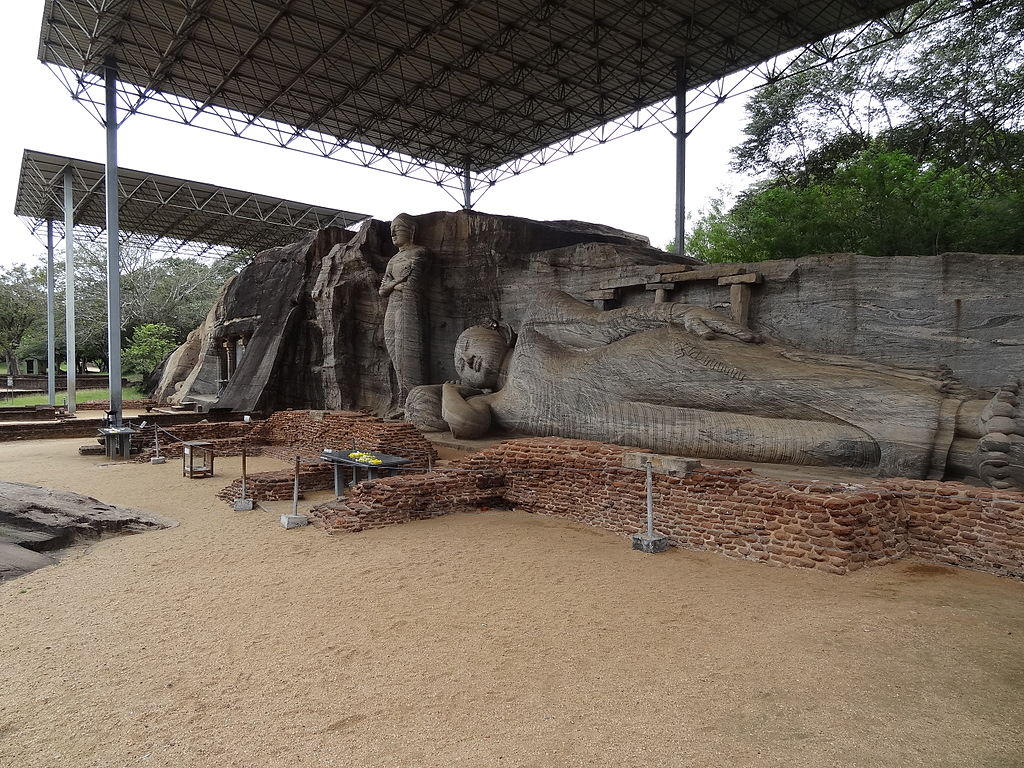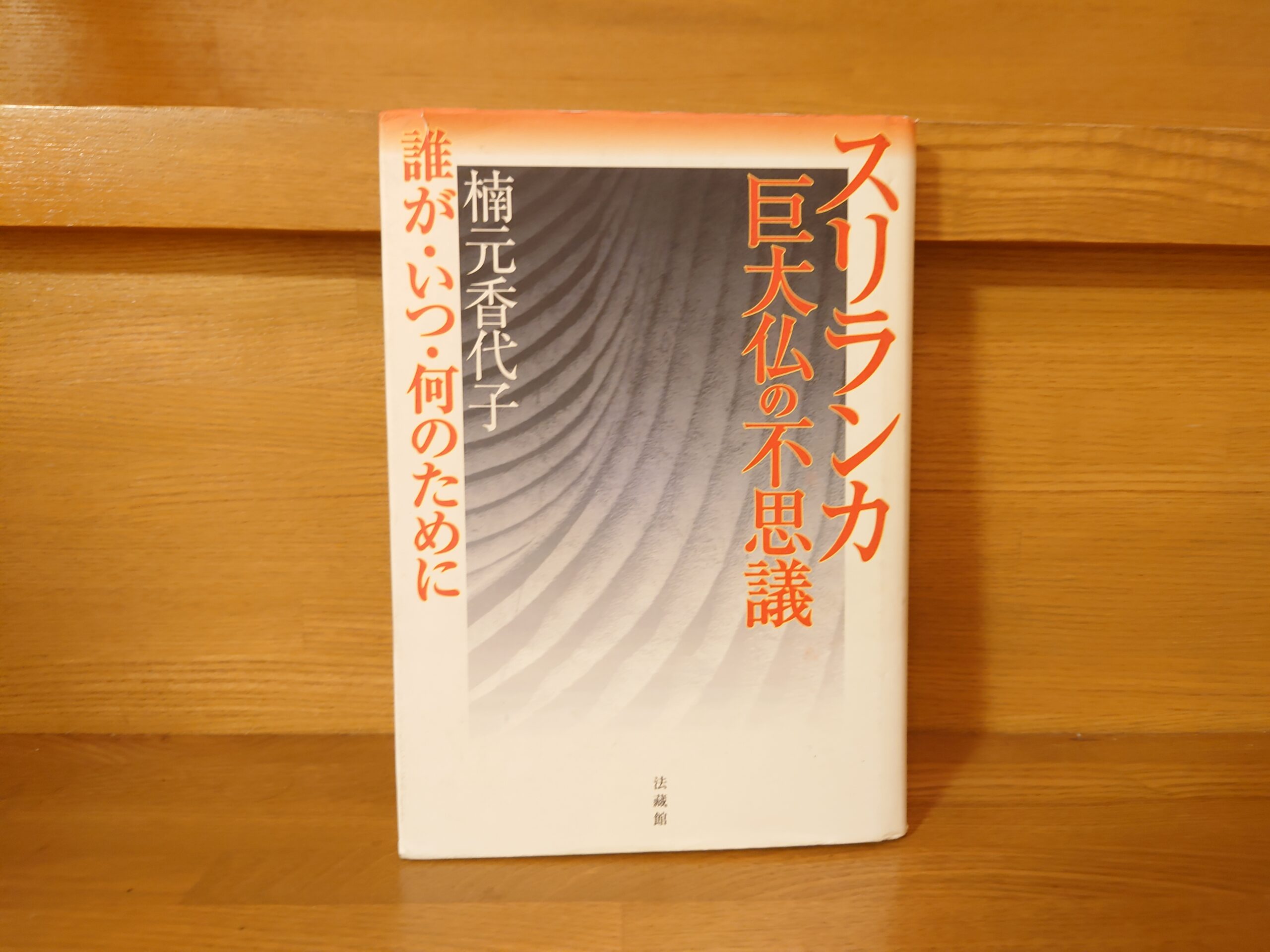Kayoko Kusumoto's "The Wonder of Sri Lanka's Giant Buddhas: Who, When, and Why" Overview and Comments - What is the fascination of Sri Lankan Buddhist statues from a sculptor's perspective? A recommended guide to learn from a new perspective!
Introduced here is "The Mystery of the Giant Buddha of Sri Lanka: Who, When, and For What" by Kayoko Kusumoto, published by Hozokan in 2004.
Let's take a quick look at the book.
Fascinated by the mysterious expression on the face of a giant stone Buddha she encountered in an ancient city, she visited the ruins of Sri Lanka. This is a journey to the ruins of Sri Lanka, where the unique perspective of a female sculptor lives on as she returns to the thoughts of an unknown stonecutter, pursues the secrets of the statue's creation, and traces the history of its former glory in a deserted temple's abandoned Buddha image.
AmazonProducts Page.

In the Buddhist country of Sri Lanka, many giant Buddha statues remain.
In the past, this blog has discussed Sri Lankan Buddhist art in Sri Lanka with Mori SodoMahayana Buddhism in Sri Lanka: Buddhism, Inscriptions, and Art Revealed."and Ito TerujiAn Introduction to Sri Lankan Buddhist Art.We have introduced the following
And this work, "The Wonder of the Giant Buddha of Sri Lanka: Who, When, and Why" will look at Sri Lankan art from a different perspective than those books.
The author states about this in his afterword
Although I have been given the opportunity to look at Buddhist statues in Sri Lanka, I am originally in the position of creating sculptures. In other words, I must confess here that I am a complete outsider in the field of Buddhist statue research. So why write a book about it? I might be scolded, but standing in Sri Lanka and gazing at the huge stone Buddhas, I felt the voices and figures of the stonemasons who created the statues, and I think I was unknowingly reliving the process of Buddha statue creation.
The "dream in the shade of a tree," which I often included in the text, came naturally out of such feelings. At first, I was nervous that I might be criticized for including such fiction in the text, but I read the literature to make the content as realistic as possible, and I pushed myself into the realistic scene as much as I could. However, I regret that I had a little too much fun.
Sri Lanka is truly a country rich in charm. Thanks to Sri Lanka, I was able to experience firsthand the interest and depth of Buddhist sculpture, and through contact with nature and history and interaction with the local people, I was somehow lured into a peaceful and comfortable world.
And the journey to solve the mystery will continue. I hope that the gentle wavelengths of Gal Vihara that drew me to Sri Lanka above all else will spread throughout the world.
Hozokan, Kayoko Kusumoto, The Wonder of the Giant Buddha of Sri Lanka: Who, When, and For What Purpose, p. 212
As mentioned in the title of this article, the author of this book is a sculptor, not a Buddhist expert.
It was extremely stimulating for me to see what the sculptors would think if they saw Buddhist art in Sri Lanka.
We can look at the beauty of a Buddha statue and its history, but it is difficult for us to understand how it was carved out of a single rock. The Buddha image was not there from the beginning. From there, the sculptor's hands created the finished product that we see today. The sculptors must have seen a world that we, who only see the finished product, cannot see. It was refreshing to read this book and learn what kind of existence a Buddha statue is as seen from the eyes of those who actually carve it.
This book introduces a number of great works of art in Sri Lanka, from the famous Buddha images to the maniacal ones. It is also an excellent guidebook for visiting Sri Lanka, as it is richly illustrated with photographs and maps.
This was an interesting book. It is an exciting book that allows you to see Sri Lankan Buddhist images from a new perspective. Why not pick up a copy?
The above is "Kayoko Kusumoto's "The Wonder of Sri Lanka's Giant Buddhas" - What is the fascination of Sri Lankan Buddhist statues from a sculptor's point of view? A recommended guide to learn from a new perspective! This is a recommended guide to learn from a new point of view!
The Amazon product page for this book, "The Wonder of the Giant Buddha of Sri Lanka," isthis way (direction close to the speaker or towards the speaker)
Click here to read the previous article.
Related Articles





































